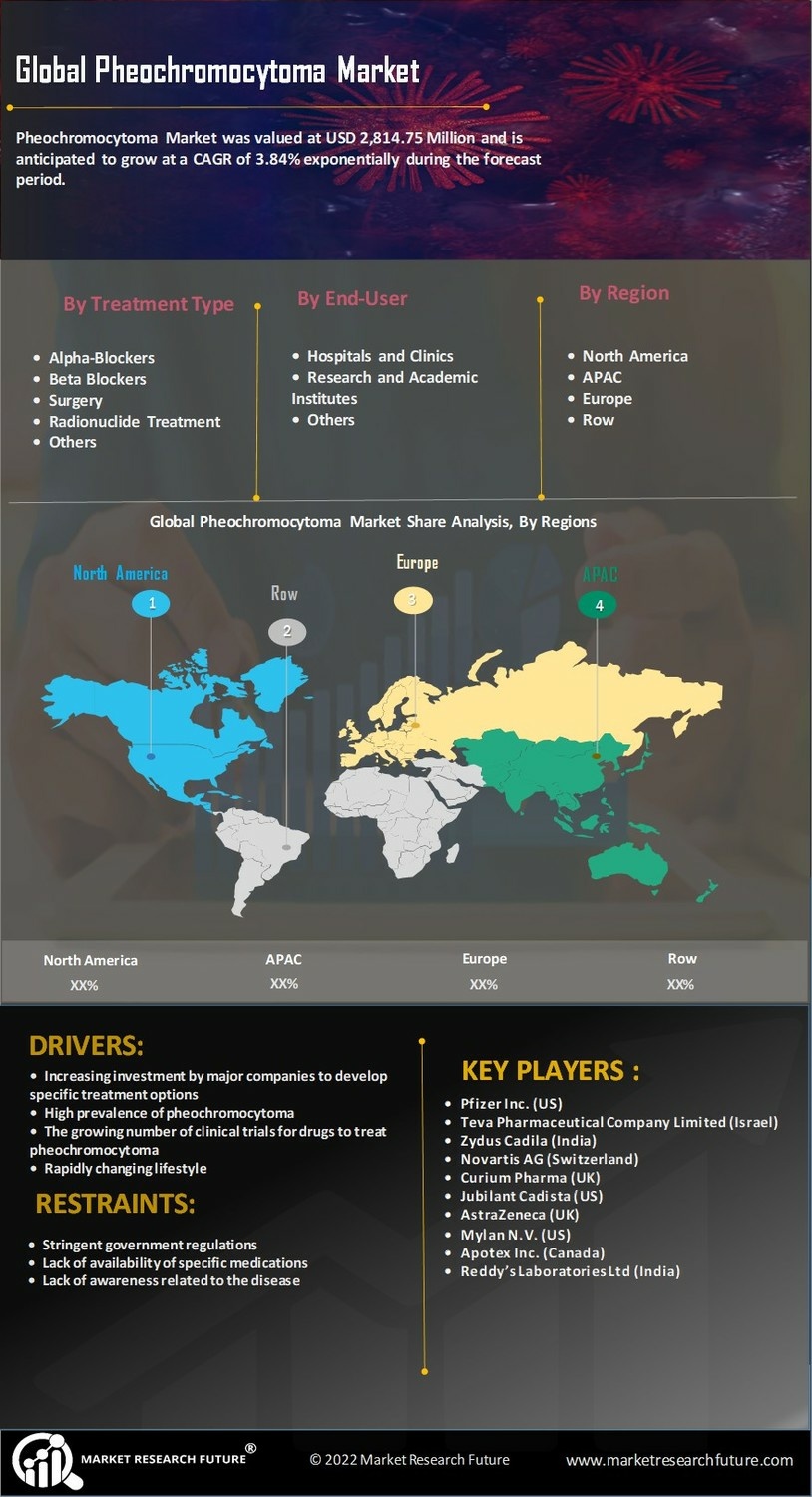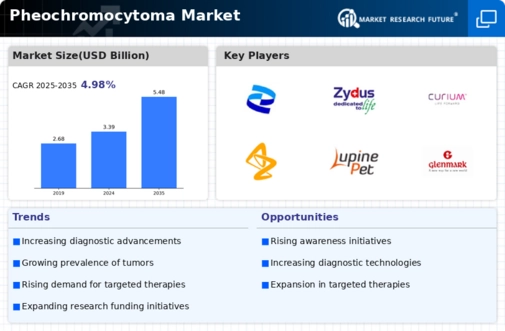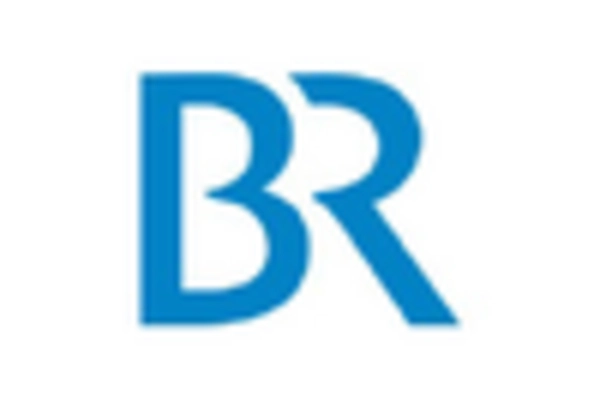Rising Incidence of Pheochromocytoma
The increasing incidence of pheochromocytoma is a notable driver in the Pheochromocytoma Market. Recent studies indicate that the prevalence of this rare tumor is on the rise, with estimates suggesting that it affects approximately 2 to 8 individuals per million annually. This uptick in cases necessitates enhanced diagnostic and treatment options, thereby propelling market growth. As healthcare systems become more adept at identifying pheochromocytoma, the demand for specialized therapies and interventions is likely to escalate. Furthermore, the growing recognition of the condition among healthcare professionals contributes to earlier diagnosis and treatment, which may further influence market dynamics. The rising incidence not only highlights the need for effective management strategies but also underscores the importance of research and development in the Pheochromocytoma Market.
Increased Patient Awareness and Advocacy
Increased patient awareness and advocacy play a pivotal role in shaping the Pheochromocytoma Market. As patients become more informed about pheochromocytoma and its symptoms, they are more likely to seek medical attention and advocate for their health. This heightened awareness is often driven by patient support groups and educational campaigns that aim to disseminate information about the condition. Consequently, early diagnosis and treatment are facilitated, which can lead to better health outcomes. Moreover, as patients demand more comprehensive care options, healthcare providers are prompted to enhance their services, thereby influencing market dynamics. The growing presence of advocacy organizations is also instrumental in pushing for research funding and policy changes that benefit the Pheochromocytoma Market.
Regulatory Support for Innovative Therapies
Regulatory support for innovative therapies is emerging as a significant driver in the Pheochromocytoma Market. Regulatory agencies are increasingly recognizing the need for expedited approval processes for novel treatments, particularly for rare diseases like pheochromocytoma. This supportive environment encourages pharmaceutical companies to invest in the development of new therapies, knowing that there is a pathway for quicker market access. The introduction of orphan drug designations and fast-track approvals can significantly reduce the time it takes for new treatments to reach patients. As a result, the market is likely to see a rise in the availability of effective therapies that address the unique challenges posed by pheochromocytoma. This regulatory landscape not only fosters innovation but also enhances competition within the Pheochromocytoma Market.
Growing Investment in Research and Development
Growing investment in research and development is a critical driver for the Pheochromocytoma Market. Increased funding from both public and private sectors is facilitating the exploration of new therapeutic approaches and diagnostic tools. This financial support is essential for advancing understanding of pheochromocytoma, which remains a relatively under-researched area compared to other cancers. The potential for breakthroughs in treatment options, such as immunotherapy and gene therapy, is attracting attention from pharmaceutical companies and research institutions. As a result, the market is likely to witness a surge in innovative products and solutions aimed at improving patient care. The commitment to research not only enhances the scientific knowledge surrounding pheochromocytoma but also fosters collaboration among stakeholders, thereby strengthening the Pheochromocytoma Market.
Technological Advancements in Treatment Modalities
Technological advancements in treatment modalities are significantly shaping the Pheochromocytoma Market. Innovations in surgical techniques, such as laparoscopic adrenalectomy, have improved patient outcomes and reduced recovery times. Additionally, the development of targeted therapies and novel pharmacological agents is expanding treatment options for patients. For instance, the introduction of selective alpha-adrenergic blockers has shown promise in managing symptoms associated with pheochromocytoma. These advancements not only enhance the efficacy of treatments but also contribute to the overall growth of the market. As new technologies emerge, they are likely to attract investment and research funding, further driving innovation in the Pheochromocytoma Market. The integration of advanced imaging techniques also aids in better diagnosis and treatment planning, thereby influencing market trends.

















Leave a Comment